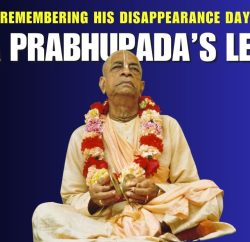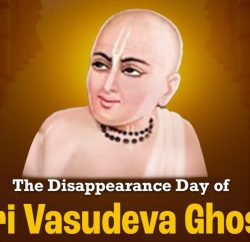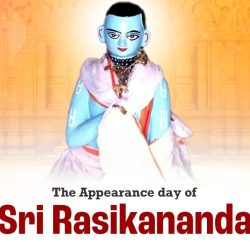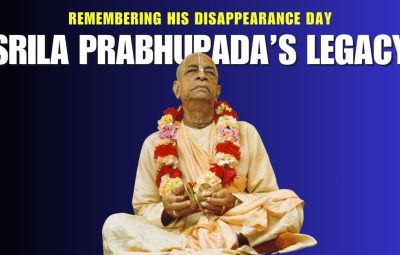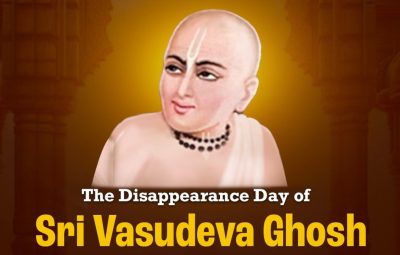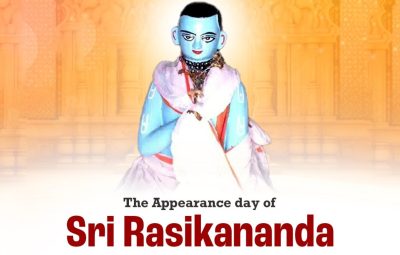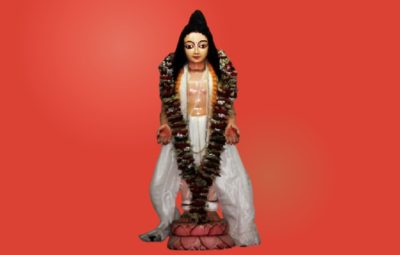Durga Puja commemorates victory of good over evil. It is an occasion to remember Goddess Durga as a pure devotee of Lord Krishna, who directs us back to His shelter.
The Vedic scriptures declare that the Supreme Lord possesses unlimited energies. The chief among them is Yogamaya, His spiritual potency. She expands as Mahamaya, also known as Goddess Durga. Yogamaya governs the eternal spiritual world, whereas Durga devi administers the affairs of the material world.
While Lord Krishna is the all-powerful Supreme Lord, Durga devi represents His supreme power within this world, the personification of material energy. Power, however, is always subordinate to the powerful. Thus, Durga devi, or material nature, works under the direction of the Lord. She conducts herself in full alignment with the will of Lord Krishna and acts as the agency for creation, preservation, and destruction of the material world.
Table of Contents
Durga: Guardian of the Material World
This material world is the place that confines the conditioned souls—those who have turned away from their service to the Lord and are always engaged in activities meant for enjoying worldly pleasures. Just as disobedient citizens are placed within a prison, the souls in this world are subjected to the laws of material nature.
Vishwa Guru Srila Prabhupada explains this condition as follows:
“Material nature, the external energy of the Supreme Lord, is also known as Durga, or the female energy that protects the great fort of this universe. The word Durga also means fort. This universe is just like a great fort in which all the conditioned souls are kept, and they cannot leave it unless they are liberated by the mercy of the Supreme Personality of Godhead.”
(Srimad Bhagavatam 5.23.3 Purport)
Thus, the material world is not meant for permanent residence but as a reformative place, governed by Goddess Durga under Krishna’s direction.
The Meaning Behind Durga’s Form
The popular image of Durga, equipped with powerful weapons in her ten hands, reflects her universal control. The ten hands symbolise the ten directions—north, south, east, west, the four corners, above, and below—indicating her authority over the entire cosmos.
Her trident (trishula) symbolises the threefold miseries of life:
- Miseries arising from one’s own body and mind.
- Miseries caused by dealings with other living beings.
- Miseries inflicted by natural disturbances.
These miseries repeatedly remind the soul of its vulnerable condition and direct it toward seeking the higher shelter of the Supreme Lord Krishna.
Divine Justice and Protection
Durga devi provides the necessities of life, enabling souls to survive and progress. Yet, when souls exploit the material energy for selfish or demonic purposes like Mahishasura, she responds with force. Tribulations such as wars, famines, or pestilence arise as corrective measures against large-scale misuse of material resources.
Thus, Goddess Durga is both nurturing and chastising, ensuring that the conditioned souls ultimately turn their attention back to Krishna.
The Cycle of Karma
Bound by their past actions, living beings wander through birth and death in different species of life. This cycle continues under Durga devi’s supervision.
Srila Prabhupada explains:
“In the material world, the living entity must accept different types of bodies. Bhrāmayan sarva-bhūtāni yantrārūḍhāni māyayā (Bhagavad-gita 18.61). According to the living entity’s desire, Yogamaya, or Maya, the goddess Durga, gives him a particular type of body, which is mentioned as yantra, a machine. But the living entities who are promoted to the spiritual world do not return to the prison house of a material body.”
(Srimad Bhagavatam 10.4.13, Purport)
Thus, our material existence is not accidental but governed precisely by divine law. Those who surrender to Krishna, rise above this cycle and return to an eternal, blissful life in His association.
Durga in Krishna’s Appearance
Durga devi’s connection with Krishna is described in the Srimad Bhagavatam. About 5,000 years ago, when Lord Krishna appeared on earth, Durga devi also took birth as the daughter of Nanda Maharaja and Yashoda in Vrindavan to assist the Lord’s mission, as ordered by Him. When Kamsa attempted to kill her, she assumed a majestic form in the sky, declaring that Krishna, his destined slayer, was already born elsewhere.
After this episode, she resided in different places, accepting worship in various forms. She became known by many names—Durgā (she is approached with great difficulty), Bhadrā (she is auspicious), Kālī (she is deep blue), Vijayā (she is the most powerful energy), Vaiṣṇavī (she is an energy of Vishnu), Kumudā (she enjoys in this material world and gives facilities for material enjoyment), Caṇḍikā (she is fierce to demons), and Kṛṣṇā (she bestows all sorts of material facilities).
Worship of Durga in Srimad Bhagavatam
People generally worship Goddess Durga for material prosperity, such as wealth, strength, fame, a good wife, victory, and so on. However, Vaishnavas, or devotees of Lord Krishna, are not interested in material favours. Therefore, whenever they worship Goddess Durga, they pray to her to achieve the favour of Krishna, recognising her position as a pure devotee of the Lord.
Srimad Bhagavatam narrates how the young gopis of Vrindavan worshipped goddess Katyayani (Durga) for one month with a vow, desiring Krishna as their husband, and not for any material gain. They used to daily offer their worship early in the morning after taking a bath in the river Yamuna.
Similarly, Rukmini devi, on the day of her marriage, went to the temple of Durga. As she proceeded toward the temple, she always thought of the lotus feet of Krishna within her heart. She offered opulent worship to the Goddess, desiring Krishna as her husband, and therefore prayed that the deity be pleased with her and bless her with that benediction.
Durga Puja is a celebration of the triumph of good over evil and an opportunity to remember Durga devi as Krishna’s pure devotee, correcting and guiding souls back to Krishna.
On this auspicious occasion, let us seek her blessings—not for temporary gain, but for advancement in our eternal relationship with Krishna.


